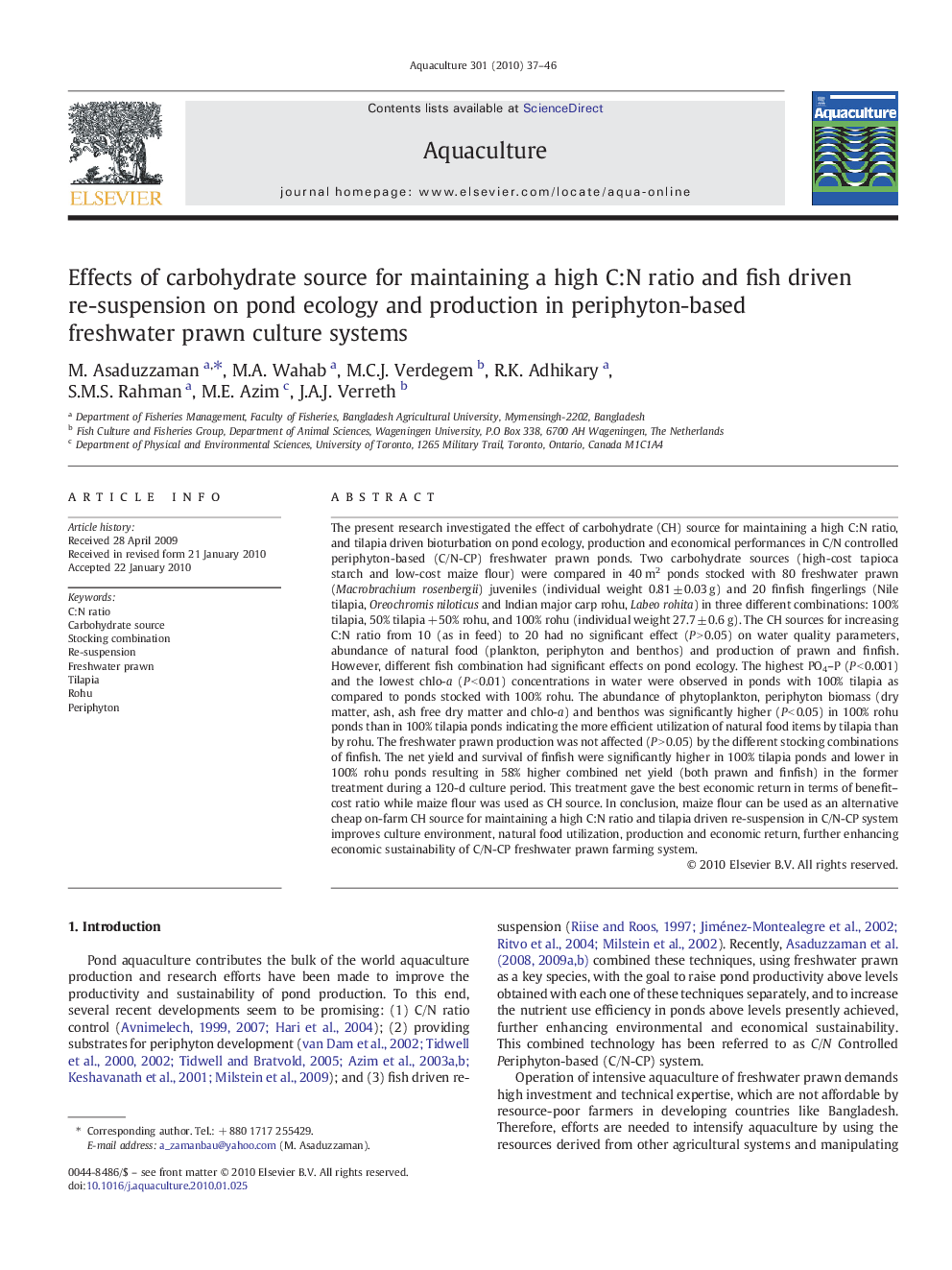| Article ID | Journal | Published Year | Pages | File Type |
|---|---|---|---|---|
| 2423464 | Aquaculture | 2010 | 10 Pages |
The present research investigated the effect of carbohydrate (CH) source for maintaining a high C:N ratio, and tilapia driven bioturbation on pond ecology, production and economical performances in C/N controlled periphyton-based (C/N-CP) freshwater prawn ponds. Two carbohydrate sources (high-cost tapioca starch and low-cost maize flour) were compared in 40 m2 ponds stocked with 80 freshwater prawn (Macrobrachium rosenbergii) juveniles (individual weight 0.81 ± 0.03 g) and 20 finfish fingerlings (Nile tilapia, Oreochromis niloticus and Indian major carp rohu, Labeo rohita) in three different combinations: 100% tilapia, 50% tilapia + 50% rohu, and 100% rohu (individual weight 27.7 ± 0.6 g). The CH sources for increasing C:N ratio from 10 (as in feed) to 20 had no significant effect (P > 0.05) on water quality parameters, abundance of natural food (plankton, periphyton and benthos) and production of prawn and finfish. However, different fish combination had significant effects on pond ecology. The highest PO4–P (P < 0.001) and the lowest chlo-a (P < 0.01) concentrations in water were observed in ponds with 100% tilapia as compared to ponds stocked with 100% rohu. The abundance of phytoplankton, periphyton biomass (dry matter, ash, ash free dry matter and chlo-a) and benthos was significantly higher (P < 0.05) in 100% rohu ponds than in 100% tilapia ponds indicating the more efficient utilization of natural food items by tilapia than by rohu. The freshwater prawn production was not affected (P > 0.05) by the different stocking combinations of finfish. The net yield and survival of finfish were significantly higher in 100% tilapia ponds and lower in 100% rohu ponds resulting in 58% higher combined net yield (both prawn and finfish) in the former treatment during a 120-d culture period. This treatment gave the best economic return in terms of benefit–cost ratio while maize flour was used as CH source. In conclusion, maize flour can be used as an alternative cheap on-farm CH source for maintaining a high C:N ratio and tilapia driven re-suspension in C/N-CP system improves culture environment, natural food utilization, production and economic return, further enhancing economic sustainability of C/N-CP freshwater prawn farming system.
